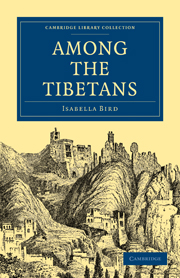Summary
In order to visit Lower Nubra and return to Leh we were obliged to cross the great fords of the Shayok at the most dangerous season of the year. This transit had been the bugbear of the journey ever since news reached us of the destruction of the Sati scow. Mr. Redslob questioned every man we met on the subject, solemn and noisy conclaves were held upon it round the camp-fires, it was said that the ‘European woman’ and her ‘spider-legged horse’ could never get across, and for days before we reached the stream, the chupas, or government water-guides, made nightly reports to the village headmen of the state of the waters, which were steadily rising, the final verdict being that they were only just practicable for strong horses. To delay till the waters fell was impossible. Mr. Redslob had engagements in Leh, and I was already somewhat late for the passage of the lofty passes between Tibet and British India before the winter, so we decided on crossing with every precaution which experience could suggest.
At Lagshung, the evening before, the Tibetans made prayers and offerings for a day cloudy enough to keep the water down, but in the morning from a cloudless sky a scintillating sun blazed down like a magnesium light, and every glacier and snowfield sent its tribute torrent to the Shayok.
- Type
- Chapter
- Information
- Among the Tibetans , pp. 72 - 100Publisher: Cambridge University PressPrint publication year: 2010First published in: 1894

